Contemporary Thinking and Recommendations for Iron Regulation and Absorption in Athletes
Written by Dietetic Intern Stacy Hruzek
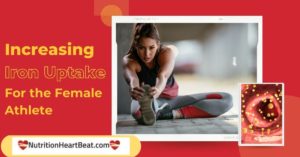
Iron regulation and absorption play important roles in maintaining optimal iron status in athletes, particularly female athletes. Iron is an essential micronutrient that is involved in oxygen transport, energy metabolism, and immune system function. However, iron deficiency is prevalent among athletes, with higher rates observed in female athletes. Hepcidin, a key iron regulatory hormone, plays a significant role in iron absorption. Increased hepcidin concentrations are associated with reduced bioavailability iron absorption from the gut, which can contribute to the high prevalence of iron deficiency in athletes, especially female athletes.1 To enhance iron absorption athletes should focus on timing of high-iron food and supplement consumption.
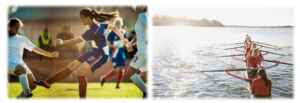
Exercise and Hepcidin
Studies show that hepcidin concentrations increase in the 3-6 hour period following acute exercise bouts.1 This exercise-induced elevation in hepcidin levels is linked to impaired iron absorption, as evidenced by reduced fractional iron absorption during feedings provided 2 hours post-exercise.1 It is important to note that exercise-related factors, such as mode, intensity, and timing, can influence hepcidin regulation and subsequently impact iron absorption.
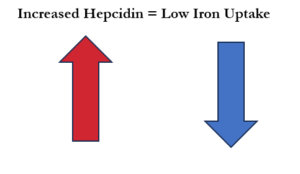
Window of Enhanced Iron Absorption
Recent research has identified a window of enhanced iron absorption that occurs approximately 30 minutes before and after exercise commencement or completion.1 This finding suggests that strategic iron intake during this period may optimize iron absorption. Conversely, delayed consumption of iron-containing foods 2 hours post-exercise has been shown to decrease bioavailability absorption.1

Menstrual Cycle and Hormonal Contraceptive Use
Iron status and regulation vary throughout the menstrual cycle and with hormonal contraceptive use in female athletes.1 The influence of estrogen, a key hormone in the menstrual cycle, on hepcidin regulation is complex. While some studies report hepcidin suppression with estrogen treatment, further research is needed to understand the impact of estrogen fluctuations on iron absorption and regulation across the menstrual cycle.
Optimizing Iron Intake and Supplementation
To optimize iron absorption, athletes should consider the timing of iron intake in relation to exercise and the diurnal rhythm of hepcidin. Consuming iron-containing foods within 30 minutes before or after exercise is ideal to enhance iron absorption, while delayed ingestion of such foods 2 hours post-exercise decreases absorption.1 Furthermore, hepcidin concentrations tend to be lowest in the morning, suggesting that iron intake in the early part of the day may be beneficial.1

Conclusion
Increased hepcidin concentrations following exercise leads to impaired iron absorption, contributing to the high prevalence of deficiency in athletes. Understanding the interplay between exercise, hepcidin regulation, and iron absorption is important for optimizing iron status.
Foods That Enhance Iron Absorption
Iron exists in two forms – heme iron and non-heme iron. Heme iron is available in meat, fish, and poultry, and it is an easily absorbed form of iron. Your body absorbs up to 30 percent of the heme iron consumed. 2
On the other hand, non-heme iron is present in plant-based foods such as fruits, vegetables, and nuts. Although non-heme iron is an essential part of a well-balanced diet, its absorption is not as complete as heme iron. Typically, your body absorbs between 2-10 percent of the non-heme iron you consume. 2 Combining heme iron with foods containing non-heme iron can lead to enhanced absorption.
Consuming foods rich in vitamin C alongside iron-rich foods or supplements can enhance iron absorption.2 Good sources of vitamin C include citrus fruits, strawberries, kiwi, pineapple, mango, tomatoes, bell peppers, and broccoli.

Animal-based sources of iron, such as lean beef, poultry (chicken, turkey), and fish (salmon, tuna), are easily absorbed by the body.

Shellfish, including oysters, clams, and mussels, are excellent sources of heme iron.
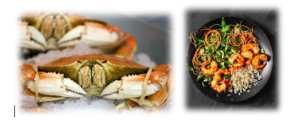
Legumes, such as lentils, chickpeas, black beans, and kidney beans, are good sources of non-heme iron. Pairing them with vitamin C-rich foods or sources can increase absorption.
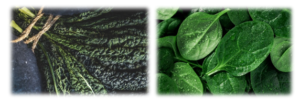
Some nuts and seeds are good sources of iron, including almonds, cashews, pumpkin seeds, and sesame seeds. As above, don’t eat them alone! Have them with fruits or veggies.

Grains and cereals are fortified with iron, making them good dietary sources. Check labels for iron content and choose whole grain options when possible. Many fortified foods also contain vitamin C!
Dried fruits like apricots, raisins, and prunes contain iron. They can be a convenient and portable snack to boost your iron intake.
Contact Dr. Schubert here for an appointment or specific input on your iron status. Here are related posts on Vitamin D, creatine, magnesium, and leucine.
References
- Peeling, P., & McKay, A. (2023). Iron regulation and absorption in athletes: contemporary thinking and recommendations. Current Opinion in Clinical Nutrition & Metabolic Care, 26(00), 000-000. DOI: 10.1097/MCO.0000000000000966
- Iron Rich Foods. (Date Unknown). Retrieved from https://www.redcrossblood.org/donate-blood/blood-donation-process/before-during-after/iron-blood-donation/iron-rich-foods.html.
